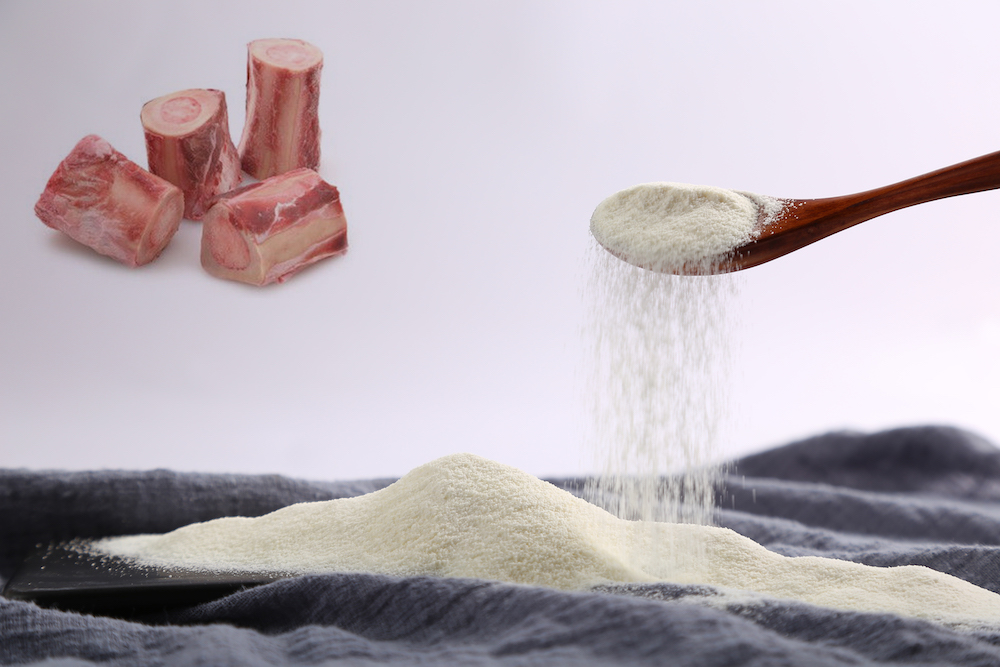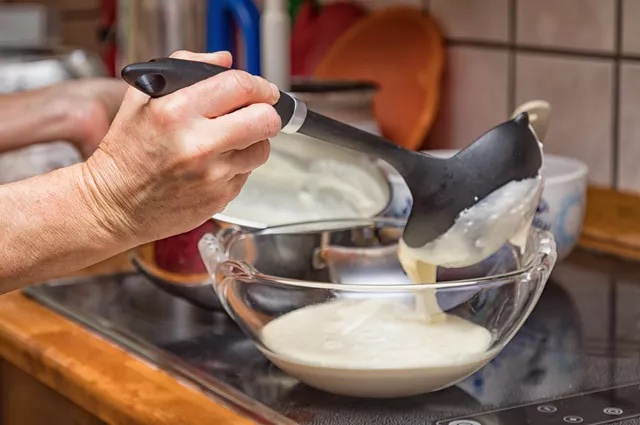Gelatin is a pure protein-based substance extracted from animal connective tissue, skin, and bones. We may easily understand the tissue and skin are full of gelatin. Some people may feel confused about how bone can produce gelatin.
Bone gelatin is a type of gelatin extracted exclusively from bones. It is made by extracting collagen from animal bones (usually cow, pig, or chicken) through a process of hydrolysis. This extraction involves breaking down the bones through prolonged boiling or treatment with enzymes. The Gelatin obtained from the bones is then further processed to remove any impurities and dehydrated into powder or granules. This bone gelatin retains the properties of gelatin, including gelling, thickening, and stabilizing capabilities.

What is bone gelatin manufactured in a factory?
The manufacturing process of bone gelatin involves several steps. Here's a general overview of the process:
1. Source: Animal bones, usually from cattle or pigs, are collected from slaughterhouses or meat processing plants. The bones should meet certain quality standards and be inspected to make sure they are safe to use. Yasin gelatin is special in bone gelatin from bovine, pig, and chicken and these bones are from the animals that fed in the pollution-free environment.
2. Cleaning and pretreatment: Thoroughly clean the collected bones to remove any dirt, debris, or residual tissue. This step may involve rinsing, scraping, or mechanical scrubbing. After cleaning, the bone may be cut or broken down into smaller pieces for easier handling and processing.
3. Hydrolysis: Pretreated bones are then subjected to hydrolysis, which involves prolonged boiling or enzymatic treatment. Boiling bones in water for an extended period of time, usually several hours, helps break down the collagen present in the bones. Alternatively, enzymes can be used to catalyze the breakdown of collagen molecules.
4. Filtration and extraction: After the hydrolysis process, the resulting bone broth is separated from solid bone residues and impurities. Filtration techniques, such as centrifugal or mechanical filters, are used to achieve this separation. This step helps ensure that only the collagen-rich liquid fraction remains for further processing.
5. Concentration and refining: Concentrate the bone broth to increase the collagen content and remove excess water. This can be achieved through processes such as evaporation, vacuum drying, or freeze drying. The concentrate is then purified and refined through various methods, including filtration and chemical treatment, to remove any remaining impurities and colorants.
5. Gelatin formation: Purified collagen solutions are subjected to controlled cooling before further processing to induce gel formation. The process involves adjusting pH, temperature, and other factors to promote the formation of a gel-like substance.
7. Drying and packaging: The gelatin is then dehydrated to remove any remaining moisture. This can be achieved by methods such as hot air drying or freeze drying. The resulting bone gelatin is then milled or ground to the desired particle size and packaged into a suitable container, such as a bag or container.
It is important to note that the exact details of bone gelatin manufacture may vary between different plants and manufacturers. However, the general process involves these major steps of extracting collagen from bone and converting it to gelatin.
Can produce bone gelatin at home?

Yes, We can simply make bone gelatin at home. To make bone gelatin at home, you will need the following materials and equipment:
Materials:
- Bones (such as chicken, beef, or pork bones)
- Water
Equipment:
- Large pot
- Strainer or cheesecloth
- Container for collecting the gelatin
- Refrigerator
Here is a step-by-step guide on how to make gelatin from bones at home:
1. Clean the bones: Start by cleaning the bones thoroughly to remove any residue or dirt. If you’re using bones from cooked meat, be sure to remove any meat left over.
2. Break the bones: To extract the gelatin, it is important to break the bones into smaller pieces. You can use a hammer, meat mallet, or any other heavy object to break them up.
3. Place the bones in a pot: Put the broken bones into a large pot and cover them with water. The water level should be high enough to completely submerge the bones.
4. Simmer the bones:
When the water comes to a boil, reduce the heat and cook for a few hours. The longer the bones simmer, the more gelatin will be extracted.
5. Strain the liquid: After simmering, use a strainer or cheesecloth to strain the liquid from the bones. This will remove any small bone fragments or impurities.
6. Refrigerate the liquid: Pour the strained liquid into a container and place it in the refrigerator. Allow the liquid to cool and store in the refrigerator for a few hours or overnight.
7. Remove the gelatin: Once the liquid has set and become gelatinous, remove the container from the refrigerator. Carefully scrape off any fat that may have formed on the surface.
8. Use or store the gelatin: The homemade gelatin is now ready to use in various recipes, such as desserts, soups, or as a dietary supplement. You can store any unused gelatin in an airtight container in the refrigerator for up to a week.
Important Note: The quality and amount of gelatin obtained from bones may vary. If you want more concentrated gelatin, you can repeat the process by adding fresh water to the strained bones and simmering again.
Remember, homemade gelatin made from bones may not have the same consistency or flavor as commercially produced gelatin, but it can still be a great addition to your recipes.
Post time: Jun-16-2023







